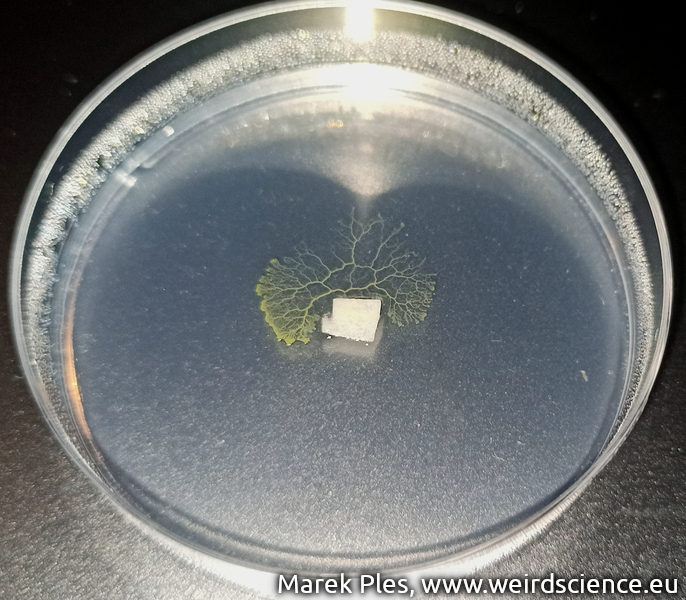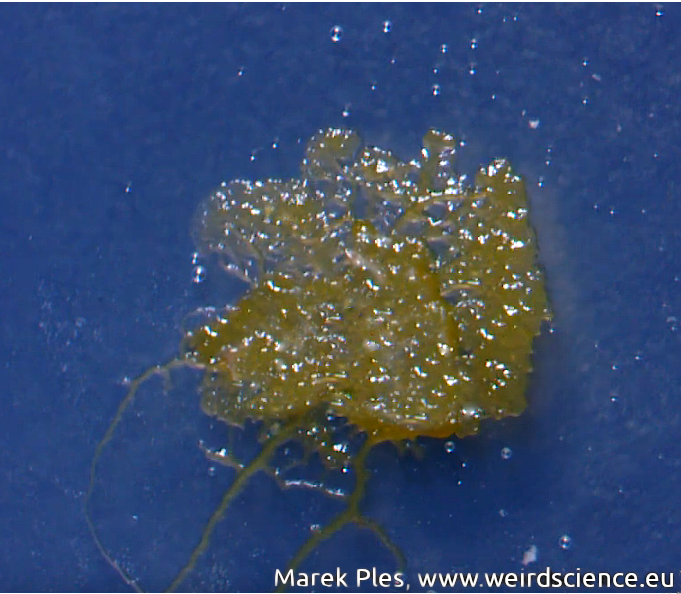
by Marek Ples
Bioluminescence is one of the natural phenomena that has always fascinated me. We can define it as the production and emission of light by living organisms. Bioluminescence occurs widely in marine vertebrates and invertebrates, fungi, microorganisms including bacteria, and terrestrial arthropods. In a general sense, the principal chemical reaction in bioluminescence involves a light-emitting molecule and an enzyme, generally called luciferin and luciferase, respectively. Because these are generic names, luciferins and luciferases are often distinguished by the species or group, e.g. firefly or bacterial luciferin.
Both Aristotle and Pliny the Elder mentioned that damp wood sometimes emits a glow, caused by fungi such as the Armillaria melea. This fungus, commonly known as honey fungus, is an edible basidiomycete in the Armillaria genus. As a plant pathogen within a complex of closely related species, it causes root rot and produces mushrooms at the base of infected trees. Symptoms include discoloured foliage, reduced growth, branch dieback, and eventual tree death. While the mushrooms are edible, some individuals may experience intolerance. This species can emit light through bioluminescence, especially in its rhizomorphs (Fig.1). Widely distributed in temperate Northern Hemisphere regions, its fruit body grows on hardwood species but can also be found on other living or dead wood and in open areas, known by various names such as stump mushroom or honey mushroom.

Many centuries later Robert Boyle showed that oxygen was involved in the process, in both wood and glowworms. It was not until the late nineteenth century that bioluminescence was properly investigated.
In order to get a closer look at the phenomenon of bioluminescence, I have set up a cultivation of many light-producing organisms in my personal laboratory; among them are bacteria (Fig.2A), protists (Fig.2B), fungi (Fig.2C), and others.
Of the examples presented, the bacterium A. fischeri and the fungus P. stipticus emit light continuously, while the dinoflagellate P. lunula only glows at night after being stimulated by various stress factors, such as mechanical stress (shaking, Vid.1) or chemical (addition of acetic acid, Vid.2).
Pyrocystis lunula is considered a model organism due to its bioluminescence capacity linked to circadian rhythms.
The cells of this microorganism, as the name suggests, have a distinctive crescent moon shape (Fig. 3).

Slime mold is an informal name given to several kinds of unrelated eukaryotic organisms with a life cycle that includes a free-living single-celled stage and the formation of spores. Spores are often produced in macroscopic multicellular or multinucleate fruiting bodies which may be formed through aggregation or fusion. Slime molds were formerly classified as fungi but are no longer considered part of that kingdom.
These interesting organisms can generally be divided into two main groups: plasmodial slime mold (enclosed within a single membrane without walls and is one large cell called syncytium) and cellular slime molds (spend most of their lives as individual unicellular protists, but when a chemical signal is secreted, they assemble into a cluster that acts as one organism). Most plasmodial silme molds are smaller than a few centimetres, but some species may reach sizes up to several square metres and masses up to 20 kilograms.
Slime molds exhibit many interesting and often surprising abilities. For example, despite the lack of a nervous system, they are capable of learning and solving labyrinths (finding the shortest path). For the purpose of my own observations, I was able to obtain from the environment and establish a culture of two slime molds (both plasmodial), Physarum polycephalum (Fig.4) and Badhamia utricularis (Fig.5).
 |
 |
|---|---|
Both slime molds are cultured on Petri dishes, on agar-agar medium without additional nutrients. Oat flakes placed on surface of medium are an excellent food source for these organisms - it can be seen on time-lapse videos of P. polycephalum (Vid.3) and B. utricularis (Vid.4).
Vid.3
Vid.4
For more information, please visit www.weirdscience.eu. You can also contact me by email (moze.dzis@gmail.com).